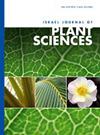超高效液相色谱-质谱联用技术(UPLC-QqQ-MS/MS)对木耳决明子叶、花和花蕾中多酚类物质的鉴别与定量
IF 0.7
4区 生物学
Q4 PLANT SCIENCES
引用次数: 0
摘要
木耳决明子是一种印度草药,传统上用于糖尿病和高脂血症。多项研究已证实其体内外抗氧化、抗糖尿病、抗高脂血症的活性。然而,只有少数作品研究了其植物化学成分,特别是传统上使用的各种植物部位的多酚成分。采用UPLC-QqQ-MS/MS对木耳叶片、花和花蕾的多酚成分进行了分析。我们的研究结果证实了黑木耳植物部位的多酚特征。共鉴定并定量了5种苯甲酸、4种羟基肉桂酸、3种黄酮类化合物和2种其他酚类化合物。结果表明,木耳叶片中黄酮类化合物含量最高(4204µg/g DW),花中苯甲酸含量最高(3924µg/g DW)。叶片和花中总苯甲酸含量分别为1580 ~ 3924µg/g DW。羟基肉桂酸从花蕾中的404µg/g DW到叶片中的2623µg/g DW不等。黄酮类化合物在叶片中的含量最高,花中的含量最低(2626µg/g DW)。根据木耳中酚类化合物的生物活性,并结合已报道的木耳药用生物活性,对研究结果的意义进行了讨论。据我们所知,这是首次对木耳花和芽中的多酚类化合物进行鉴定和定量。本文章由计算机程序翻译,如有差异,请以英文原文为准。
Identification and quantification of polyphenols from Cassia auriculata L. leaf, flower and flower bud using UPLC-QqQ-MS/MS
Cassia auriculata is an Ayurvedic medicinal herb, traditionally indicated for diabetes and hyperlipidemia. Several works have demonstrated its antioxidant, antidiabetic and anti-hyperlipidemic activity in vivo and in vitro. Nevertheless, only a few works have investigated its phytochemical composition, and specifically, the polyphenolic composition of the various plant parts that are traditionally used. In this work, the polyphenolic composition of C. auriculata leaves, flowers and flower buds were evaluated using UPLC-QqQ-MS/MS. Our results demonstrated the polyphenolic profile of C. auriculata plant parts. A total of five benzoic acids, four hydroxycinnamic acids, three flavonoids and two other phenolic compounds were identified and quantified. Our results show that in C. auriculata leaves, flavonoids were most abundant (4204 µg/g DW), while in flowers benzoic acids were the most prominent (3924 µg/g DW). Total benzoic acid contents ranged from 1580 to 3924 µg/g DW in leaf and flower, respectively. Hydroxycinnamic acids ranged from 404 µg/g DW in flower buds to 2623 µg/g DW in leaves. Flavonoids showed the highest contents in leaves, while the lowest levels were observed in flowers (2626 µg/g DW). The meaning of the results is discussed in light of the bioactivities of phenolic compounds, concomitant with C. auriculata reported medicinal bioactivities. To our knowledge, this is the first work to identify and quantify polyphenolic compounds in flower and bud of C. auriculata.
求助全文
通过发布文献求助,成功后即可免费获取论文全文。
去求助
来源期刊

Israel Journal of Plant Sciences
生物-植物科学
CiteScore
1.90
自引率
0.00%
发文量
17
审稿时长
>12 weeks
期刊介绍:
The Israel Journal of Plant Sciences is an international journal of extensive scope that publishes special issues dealing with all aspects of plant sciences, including but not limited to: physiology, cell biology, development, botany, genetic
 求助内容:
求助内容: 应助结果提醒方式:
应助结果提醒方式:


